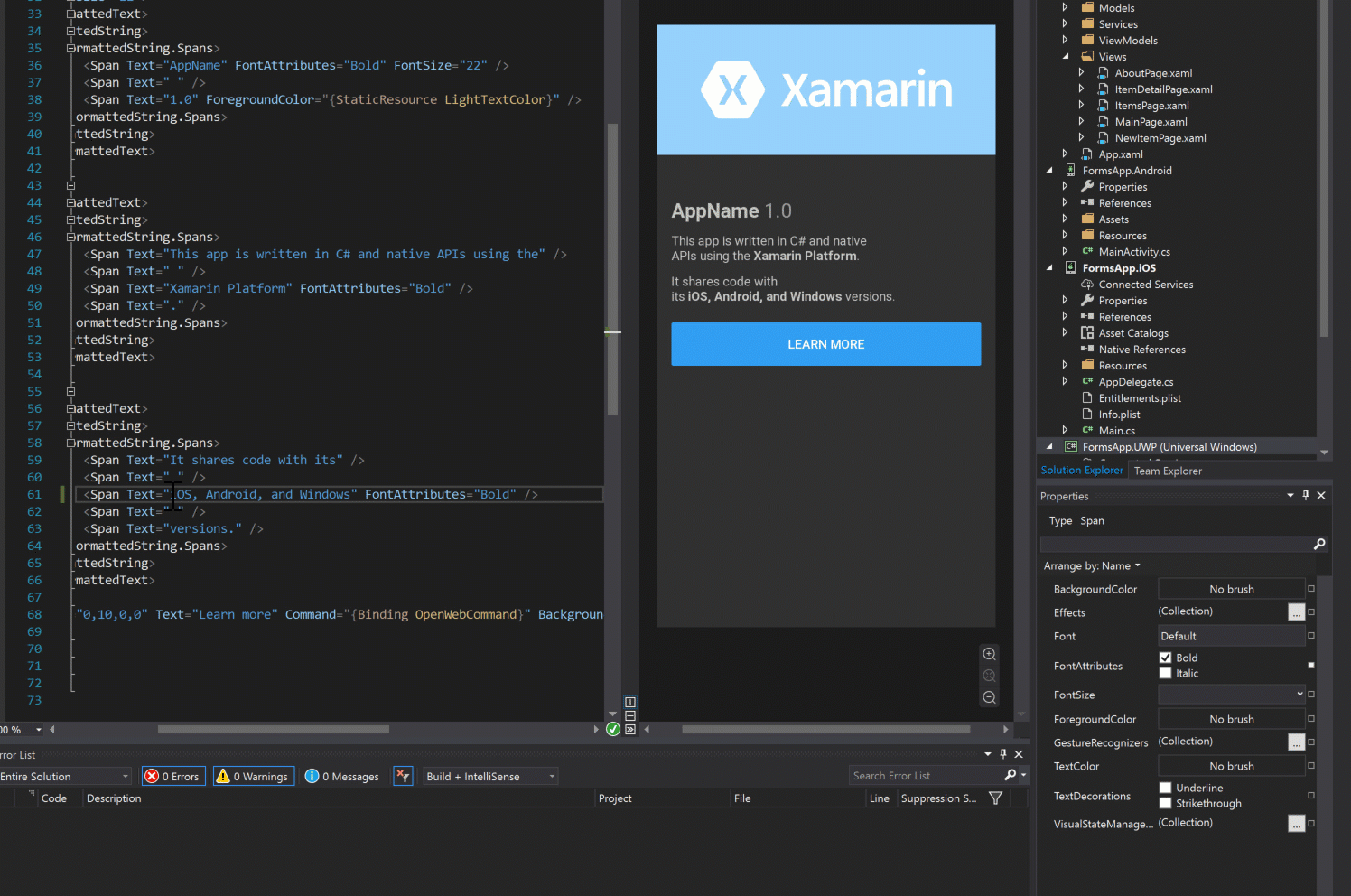
That XAML can be declarative – angle brackets and element declarations – or it can be imperative, with elements instantiated programmatically and wired together to form visual trees. In Xamarin Forms, you can use XAML to define a UI, and that UI will work on iOS, Android, and Windows Phone. Developers who have written for WPF, Silverlight, Windows, or Windows Phone have a leg up on the competition because Xamarin Forms rely on XAML. In 2014, Xamarin introduced Xamarin.Forms (hereafter referred to as “Xamarin Forms”), which allow UIs to be shared across platforms, too.
#Visual studio 2015 intellisense xamarin how to
Much of the learning curve comes in learning how to build UIs using idioms specific to each platform. NET find themselves immediately at home in Xamarin because they’re largely insulated from the underlying operating system’s native APIs. Developers who are familiar with Microsoft. A typical Xamarin app consists of per-platform UIs backed by a shared code base written in C# and compiled into a Portable Class Library (PCL). NET APIs, but also enjoy the ability to invoke native platform APIs when the need arises. Xamarin apps utilize APIs that derive from Microsoft. With a heritage rooted in Mono, MonoTouch, and Mono for Android, Xamarin allows developers to write mobile apps in C# and compile them into native apps for iOS, Android, Windows Phone, and other popular platforms. Since 2011, Xamarin has offered a compelling solution to developers who write mobile apps but lack the time or wherewithal to port them to all the popular mobile operating systems. You can write the coolest mobile app in the world, but unless it runs on iOS and Android, few people will care. But the rest of the world doesn’t share that love with me.


I love writing apps for Windows and Windows Phone.


 0 kommentar(er)
0 kommentar(er)
